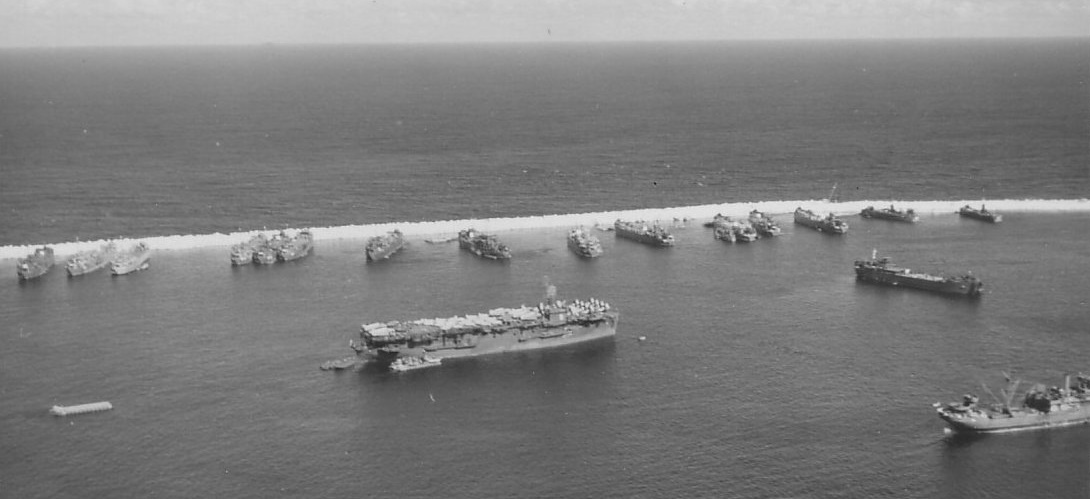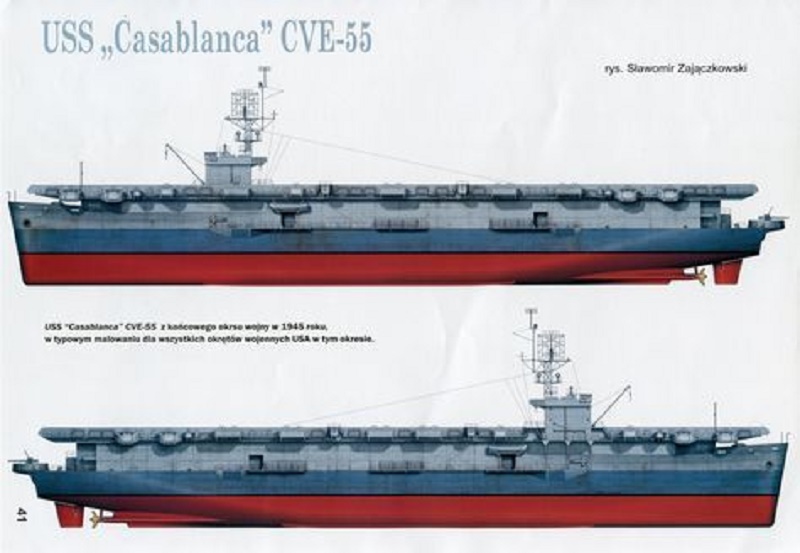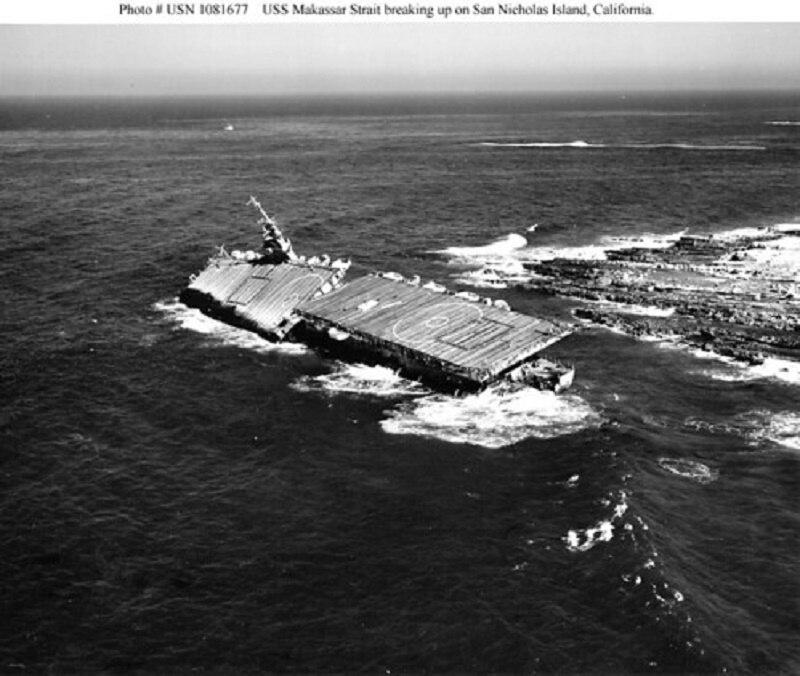The US Navy had received enquiries from the Royal Navy for a mercantile conversion to a light aircraft carrier. Eventually known as Escort Carriers these vessels provided extremely useful service in many theaters. Undoubtedly these little carriers won the Battle of the Atlantic. Combined with more and better escorts the German U-Boats could not compete. Used as ferry carriers, bringing replacement aircraft to the front line carriers, ninety or more aircraft could be squeezed aboard. The US Navy used their 'Fleet Train' groups to provide the backup services to the main Task Forces, the escort carriers being the main provider of air superiority and ASW aircraft.
The first Escort Carrier was a hasty conversion by the Royal Navy of a captured German merchant ship. Provided with a flight deck, and half a dozen aircraft, HMS Audacity proved the concept during its short career from September to its sinking in December 1941. Eventually the British and American production of Escort Carriers was over 130 ships. The last CVE's were completed in 1944 when it was obvious that the war would be won with the ships in service. None of the CVE's built lasted more than a couple of years past the end of the war. Most were converted back to their merchant ship origin. Only HMS Campania was used for any length of time post-war.
The US Navy produced five or six different classes of CVE (depending on whose book you read) but I have reduced that to two and have included the earlier ships with the Bogue and the Sangamon and later ships all in the Commencement Bay class.
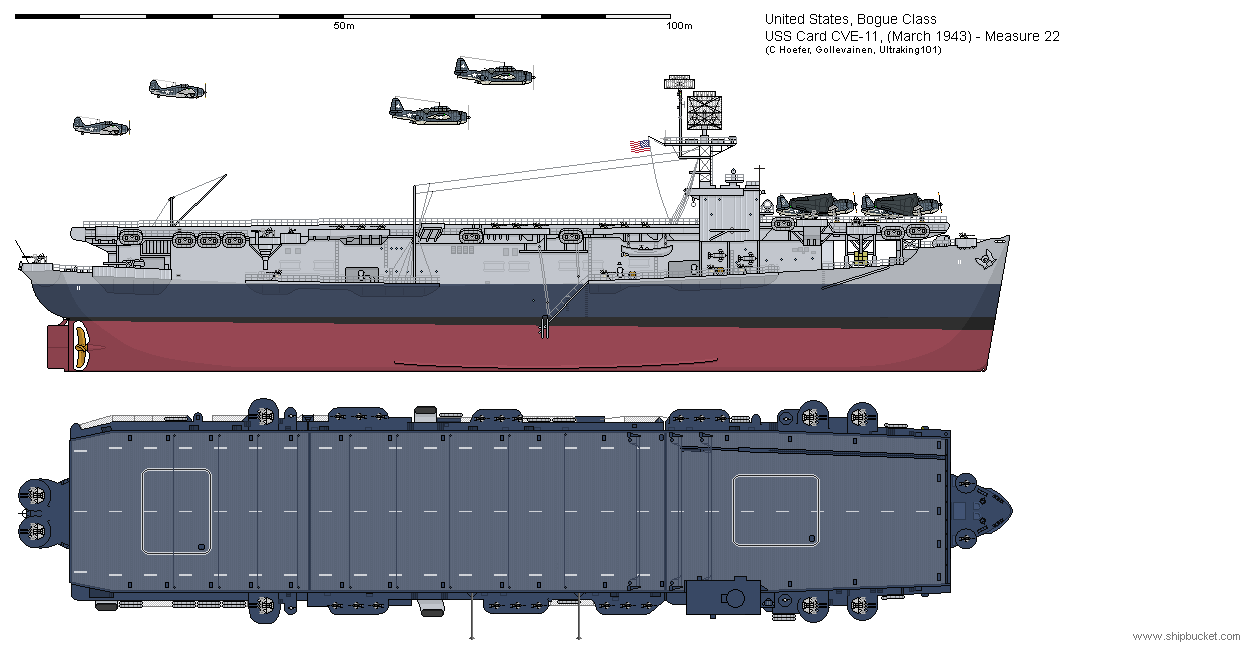
The Bogue class was developed from the earlier one off development ships. A standardised hull (Type C3 merchant hull) was chosen and while the first conversions were done from partially completed ships, the majority were built from the keel up as escort carriers. At least half of the class were transferred to Royal Navy service and served in the Atlantic and Mediterranean. The ships were found to be a bit small and were replaced in production by the bigger Commencement Bay class.
It is easy to overlook the importance of the Escort Carriers in the overall scheme of the Second World War. But these ships closed the Air Patrol gap in the North Atlantic. This made it so much more difficult for the U-Boats to operate effectively. Turning the tide against the U-Boats allowed for the build-up of forces in the United Kingdom that launched the attacks into German Occupied Europe that knocked Italy then Germany out of the war.
35 of 50 Bogue Class were transferred to the Royal Navy. In the war only three of the class were lost, all being torpedoed by U-Boats.
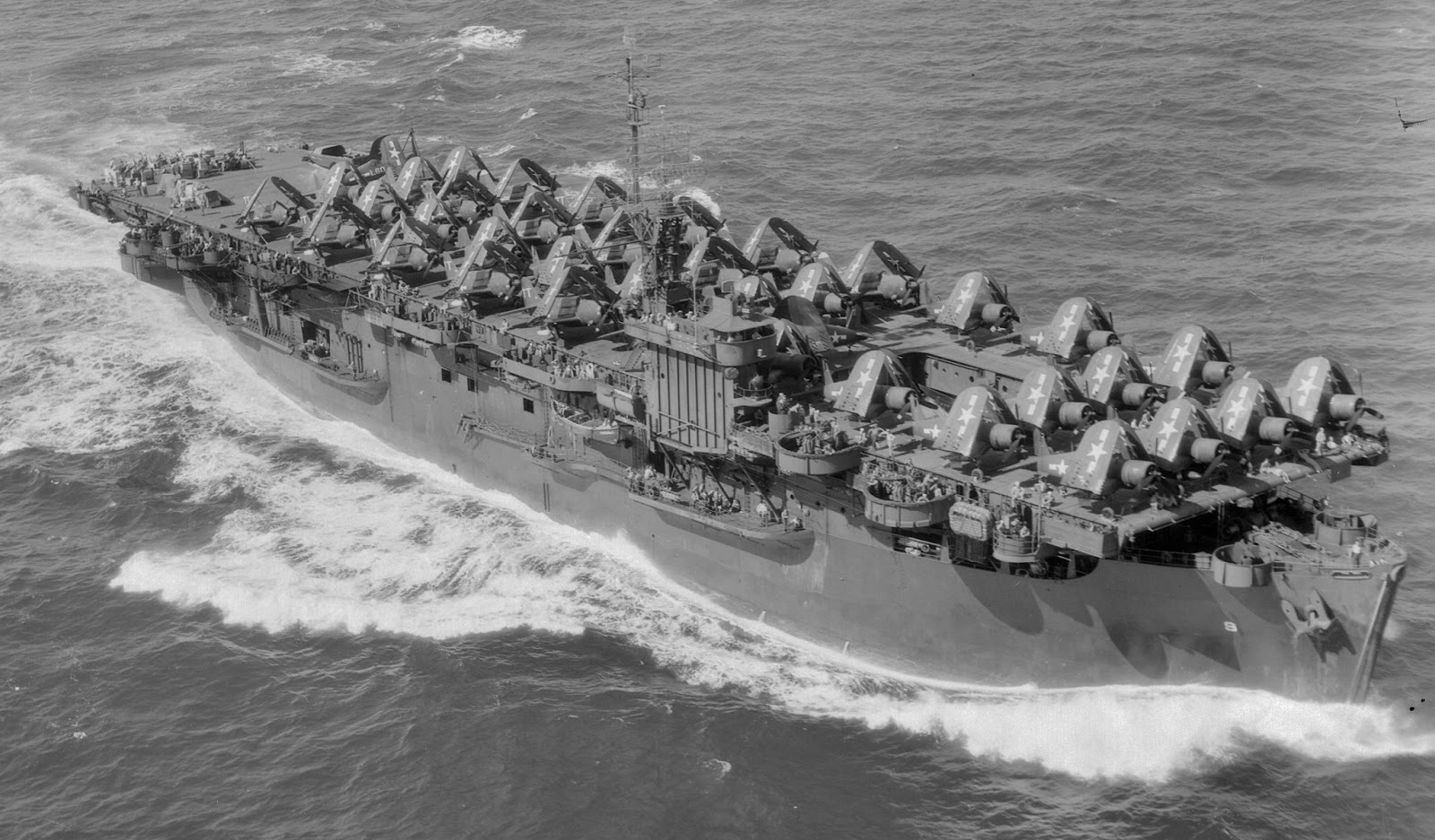
Bogue class carrier acting as an aircraft transport with a load of Corsairs aboard.
